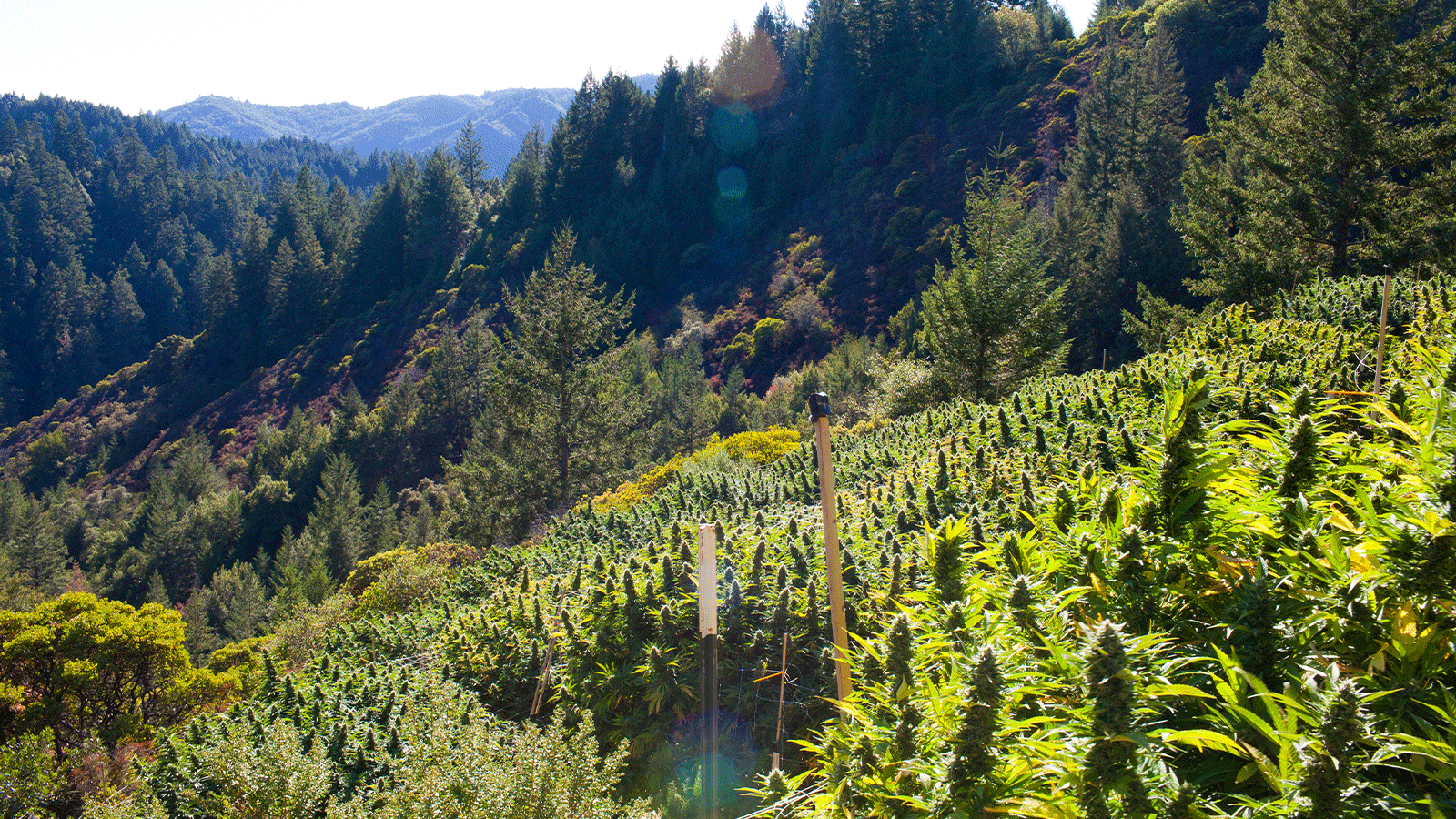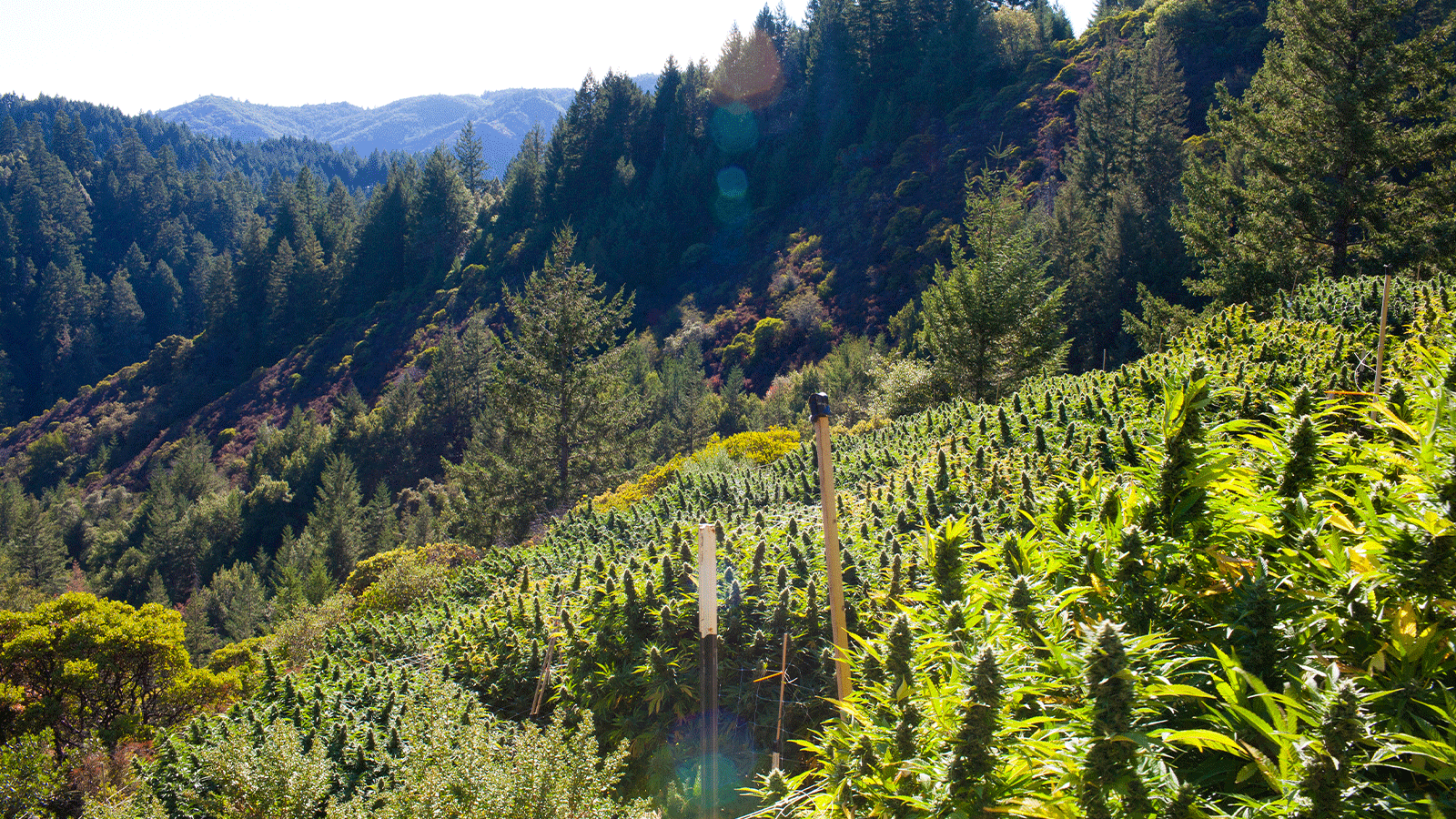
No matter how much experience they have under their belt, cultivators who choose to grow cannabis in an outdoor environment are at the full mercy of Mother Nature.
Every few years, that constant battle intensifies for cannabis plants grown in the California sunshine, as they are forced to square off with El Niño, an irregularly occurring series of climatic changes that causes warmer ocean water throughout the Pacific Ocean, bringing heavier rainstorms and hotter temperatures to the West Coast.
El Niño is a phase of the El Niño–Southern Oscillation (ENSO), a climate phenomenon caused by the interaction between the Earth’s atmosphere and the tropical Pacific. This interaction creates a sort of pendulum that swings between cooler and warmer sea surface temperatures, while also affecting weather conditions across the globe.
El Niño is a phase of the El Niño–Southern Oscillation (ENSO), a climate phenomenon caused by the interaction between the Earth’s atmosphere and the tropical Pacific. (Shutterstock Photo)
It has an especially notable effect on California’s agricultural industry. That, of course, includes outdoor cannabis cultivation. When El Niño rolls around, it can inflict the Golden State with warmer-than-usual climate and intense amounts of rain, which could heavily affect outdoor cannabis grow operations. According to the National Oceanic and Atmospheric Administration (NOAA), as of May 2019, there is a 65% chance of an El Niño weather pattern emerging during summer 2019.
Weather patterns created by El Niño have a major impact on cannabis grown in the Emerald Triangle, a cultivation-rich region in Northern California consisting of Humboldt, Mendocino, and Trinity counties. This region is historically known for its endless array of cannabis farms. On top of that, outdoor cultivators in the region must also closely monitor the general effects of climate change.
What Impact Does El Niño Have?
Not all phases of this weather cycle are necessarily bad for outdoor cultivators. La Niña is the colder phase to El Niño, and is responsible for cooling the water temperature in the Pacific Ocean. In Humboldt County, according to Kevin Jodrey, founder of Wonderland Nursery, a Humboldt County-based cannabis farm, a successful harvest can depend on what cycle the weather pattern is in.
“El Niño is going to dump massive amounts of water, while La Niña typically gives you a milder winter,” he said to Weedmaps News. “If we can have a milder winter, then we normally have an earlier spring. La Niña allows you to start your cycles earlier, but El Niño means you’re going to have some extreme water coming in.”
El Nino generally results in a lot of rain, while La Nina affords cultivators a mild winter. (Shutterstock Photo)
In a state where lengthy droughts are common, rain is a welcome sign to many Californians. It can also be beneficial to outdoor cannabis crops, depending on which stage of the growing process they’re in.
“I think we’re very inviting to small amounts of rain, especially in the vegetative stage all the way until June or July,” said Johnny Casali, a longtime Humboldt County resident and founder of Huckleberry Hill Farms, a local cannabis farm. “It washes the dust off the leaves, it cleans the plant, there’s a certain amount of nitrogen that comes in with fresh rain. I think the plants really enjoy it, we always see rigorous growth after rain.”
If heavy rainstorms strike during the flowering process, however, outdoor cannabis crops become extremely susceptible to mold. As buds form and the flower starts appear at the top of the plant, the humidity created by the rain can create moisture in these areas, leading to different types of mold. Rain can also add too much weight to the end of the branch, causing it to break off from the main stem. Even if the plants are housed in a greenhouse and largely protected from the elements, rain can still have an impact on the cultivation process.
“Greenhouses tend to fare a little bit better as far as combating earlier rains, but what happens is that all of the outside grounds and surrounding area gets really wet,” Casali said. “If the rain doesn’t beat your plants down, it’s the mold and stuff that can get you, too.”
Alongside almighty rainstorms, El Niño weather patterns can also generate some strong winds in the Humboldt County area. When these storms hit a cannabis farm, powerful wind can easily uproot cannabis plants and wreak havoc over an entire harvest.
Besides having to grapple with rain during El Nino, cultivators must also deal with stronger-than-average winds. (Shutterstock photo)
“We had a rain storm a couple of years ago that was tearing 10-pound [4.54 kilograms] plants right out of their cages and rolling them down the hill,” Jodrey said. “All of a sudden, if you have 5 inches [12.7 centimeters] of rain come down with an 80-mile-per-hour wind, there’s not much that can handle it.”
El Niño can also lead to higher temperatures, and rises in temperature could also affect plants — especially if the temperature doesn’t subside once the sun goes down. While having a climate-controlled greenhouse could help alleviate high temperatures, Casali explained that implementing such a system could be too costly for most farmers. Regardless, the temperature is another critical factor that all outdoor growers must monitor in order to optimize the final harvest.
“It’s just so much added stress to that plant. You can see the plant suffer, it definitely doesn’t thrive in those conditions,” Casali said. “You can definitely see the effects of the warmer weather negatively affecting the cannabis. Too hot is definitely not good.”
It’s not just El Niño weather patterns that are forcing growers in the Emerald Triangle to alter their long-established cultivation strategy. Regional climate change has also intensified, which has led to more sporadic weather patterns that are disastrous for some cannabis plants.
“Instead of getting 4 inches of rain distributed over the month, I get four inches of rain distributed over the course of an afternoon,” Jodrey said. “Those are the type of things that are catastrophic as a cultivator, and you have to basically “X” out a lot of the varietals that you used prior.”
How Cannabis Cultivators Overcome El Niño
In the event that El Niño creates droughtlike conditions in California, there are certain ways for outdoor cannabis growers to evade the brunt of the weather pattern’s negative effects. But there’s not an end-all-be-all approach. Cultivators take different approaches depending on the region, strain type, growing methodology, and personal preference.
“It seems like every farmer goes about it a little differently. Some of them read the Farmer’s Almanac, some of them are not so superstitious and just play it however the cards roll out,” said Casali. “Towards late August, you really start to monitor the weather patterns and start to predict when those earlier rains are going to start rolling in.”
Every cannabis farmer approaches inclement weather differently, but when harsh weather hits, they must all cope. (Photo by Gina Coleman/Weedmaps)
For Casali, the trick is to grow smaller plants that require a shorter growing season. This allows him to start the process during the warm season and complete the flowering process before mid-September rains usually pour down in the Humboldt region.
“I think it’s really important for those people to start early when the weather is warm, you know, in May or even early June you can start your seeds,” said Casali. “The shorter the growing season for you, the less amount of time they have to be affected by something like that.”
At the Wonderland Nursery, however, Jodrey takes an extremely methodical approach to his expansive cultivation process. Before dealing with potentially harsh rain or winds from El Niño, the Humboldt County-based grower artificially creates the potentially disastrous weather patterns himself. This is all a part of his research and development (R&D), which entails testing a wide range of varietals to figure out what they can handle.
During R&D, the cultivator sprays down his sample plants with massive amounts of water during flowering to see which can withstand the heavy beatdown and are not susceptible to mold.
“I create artificial problems by hosing them down and spraying the buds to find out if I can break the plant or make it rot,” he explained. “It’s really just a matter of trying to understand the issues that you might face.”
The seasoned cultivator uses seeds during the trial-and-error process and moves onto clones when it’s time for large-scale production. While seeds have genes from parents strains, they also have the potential to evolve and adopt different growth characteristics that make them better suited for harsh weather conditions. Once he discovers which varietals show the most resistance to rain, wind, and high temperatures, Jodrey knows which plants he can count on even if his farm is inundated with undesirable weather.
Kevin Jodrey, founder of Wonderland Nursery, starts with seeds then clones the varietals that fare best against his manmade weather conditions. (Photo by Gina Coleman/Weedmaps)
“What I can do is mitigate my losses and diversify my varietals so that I have enough different things that have windows of opportunity and different levels of resistance, so that I have the greatest chance of harvesting something,” Jodrey explained. “Some years are incredible and you harvest everything, but some years are brutal and you don’t harvest too much.”
For amateurs just earning their stripes in the outdoor cultivation world, the best way to master the art of growing and avoid climate-related calamities is to become familiar with the weather cycles and the surrounding environment. Jodrey’s recommendation to entry-level growers is to talk to neighboring farmers, attend local cannabis cultivation meetings, such as the regional chapter of the California Growers Association, and use the internet to find varietals that are best-suited to withstand the potentially harsh elements that could strike in that specific area.
“Nowadays, everyone is communicating it’s not so clandestine, you can ask people that have historically cultivated what works here,” he explained. “That’s the easiest way, because, ultimately, amateurs are just masters at the beginning. It’s always a progression.”











